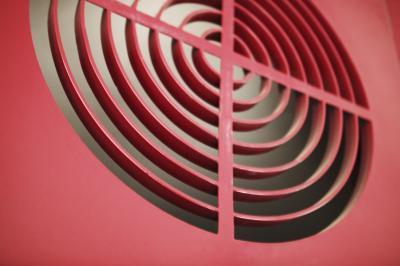Attic Fan Installation & Maintenance
Static and power ventilators provide air movement in the attic to eliminate condensation problems and extreme heat build-up.
No matter how well insulated your home is, nothing will keep hot air from rising up through it. As the heat rises during the hot months, a well-insulated attic will trap the hot air, which can create a temperature difference of up to 10°C (50°F) between the air in the attic and the outside air. This extreme heat will force its way back down into the house unless your attic has adequate ventilation to moderate the temperature.
Without attic ventilation, the winter months will see condensation forming in the attic, destroying the effectiveness of your insulation and creating an escape route for the warm air in the house To ensure that the air in the attic doesn’t have a chance to remain static, you should have about 77cm2 (1ft) of ventilation for every 14 to 23m2 (150 to 250ft) of attic space. To accomplish this, there are several varieties of both static and power ventilators that are easy for the do-it-yourselfer to install.
Static ventilators
You’ll need a series of different types of vents to provide adequate attic ventilation. Soffit vents are the most familiar type. They’re metal grates placed horizontally on the soffits to keep weather out and to allow cool air to enter the attic and flow along the attic floor.
Another type of static ventilator is the gable-end louvre, which is usually triangular and fits under the peak of the roof in the gable ends. Air is drawn in through one ventilator according to the direction of the wind, falls to the floor of the attic and moves across the attic floor and out the ventilator at the other side of the roof.
Both these types of ventilators are good at removing air that sits along the attic floor. However, both do little to ventilate the warmer air that collects at the peak of the roof.
To exhaust this warmer air, roof louvres of wood, aluminum, steel or plastic can be mounted near the peak of the roof. These ventilators are covered and screened to prevent rain and snow as well as birds, animals and insects from entering the attic.
Turbines are another type of ventilator placed close to the roof peak to eliminate warm air. Turbines are metal with multiple fins that rotate in the wind. However, this type tends to remove warm air only from the immediate area of the turbine
Ridge vents are arguably the best vent to install to remove hot attic air. These aluminum vents are placed over the ridge of the roof the entire length of the peak, providing the warm air with a large avenue of escape.
For effective attic ventilation, the best combination of vents to use is the soffit and ridge vent. The soffit vents take care of the cooler air along the floor of the attic, while the hot air that rises in the attic can be exhausted through the ridge vent.
Roof louvres combined with soffit vents will also provide a similar effect. However, you must remember that one roof louvre won’t do an efficient job. You’ll probably need multiple louvres to remove all the hot air around the peak of the roof.
Power ventilators
Power ventilators are basically electric fans that exhaust air to the outside. Some units have a thermostat that will automatically turn on and shut off the ventilator when preset temperature levels have been reached.
